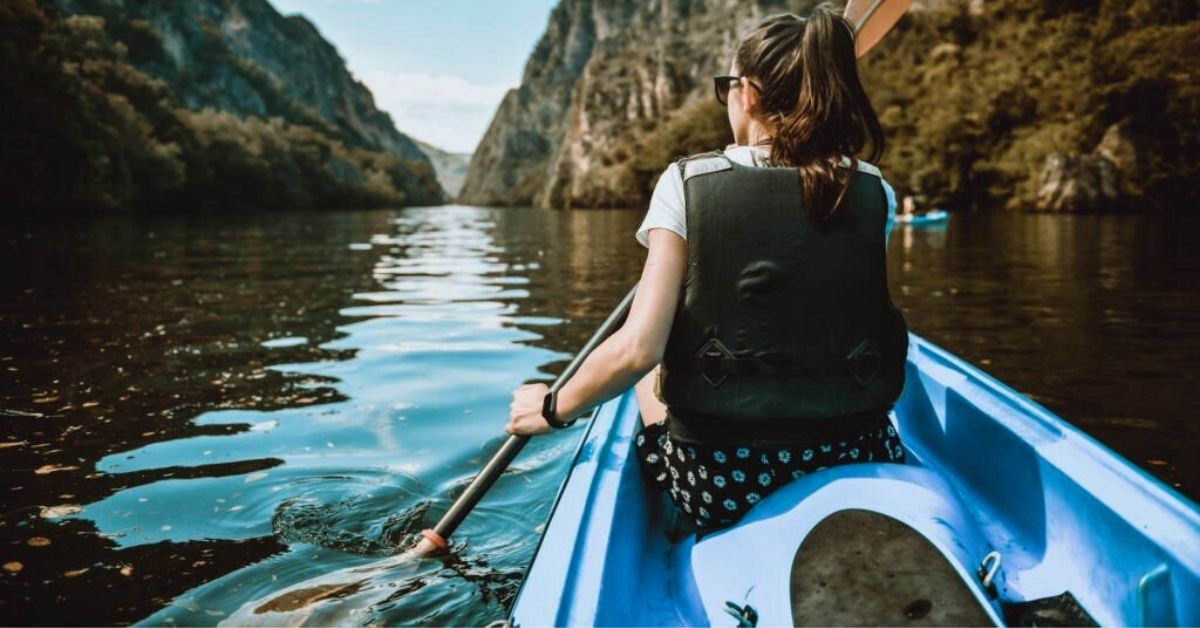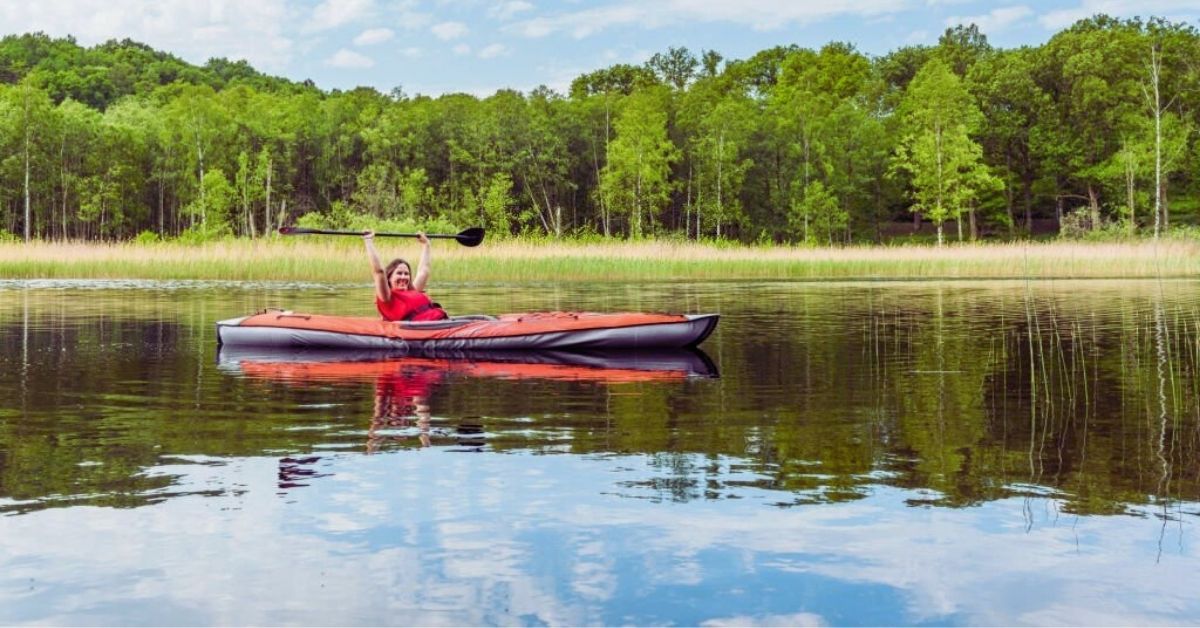Kayaking is a thrilling pastime for all ages. Choosing the proper kayak size may be difficult, particularly for novices. Each kayak length and width is intended for a unique function. The correct kayak size may make your water time comfortable and pleasant.
In this essay, we will explore the different sizes of kayaks and provide guidance on choosing the one that best fits your needs. Whether you prefer a leisurely paddle or are seeking more adventurous waters, we can assist in finding the ideal kayak for your next expedition.
Table of Contents
1. Why kayak size matters
Choosing the proper kayak size ensures a fun and safe water experience. The size of your kayak affects your comfort, stability, maneuverability, and performance, whether you’re a novice or an expert.
Because of its influence on water stability, selecting the proper kayak size is crucial. A kayak that is too narrow or short for your size and weight may feel unstable and wobbling, increasing the danger of capsizing or losing control.
However, a kayak that is overly broad or long may lack agility and reactivity, making it hard to maneuver narrow places or choppy waves.
Comfort and Fit
Your kayak size also influences comfort when paddling. Cramped kayaks may cause pain, muscular strain, and poor paddling. A too-large kayak may be difficult to manoeuvre, causing tiredness and a less pleasurable experience.
Kayak performance also depends on length. Longer kayaks are better for open water and longer distances since they track straighter and have more speed. Shorter kayaks are better for small rivers and tight turns due to their mobility.
Choosing the proper kayak size depends on your body size, weight, paddling technique, intended usage, and water conditions. Try out various kayaks, talk to experts, and evaluate your preferences and comfort before buying.
Choosing the proper kayak size can improve your paddling experience, safety, and pleasure on the water. So, take your time finding the right fit and prepare to kayak confidently.
2. Considerations for kayak length
Choosing the proper kayak size involves various criteria. The kayak’s length determines its performance and versatility. Consider these criteria while choosing a kayak length.
1. Paddling conditions: Shorter kayaks may be simpler to control on lakes and moderate rivers. For rougher conditions or ocean kayaking, a longer kayak will give superior stability and tracking.
2. Kayak Purpose: Your kayak’s purpose affects its length. A 9- to 12-foot kayak is ideal for leisure paddling, fishing, and calm water exploration. However, a longer kayak (12–16 feet) is more efficient and faster for touring or sea kayaking.
3. Your body type and size are significant. A narrow or short kayak may restrict your body. A kayak’s breadth and cockpit size should enable you to sit comfortably and have ample legroom.
4. Storage and Transportation: Kayak length influences storage and transportation. Longer kayaks may need a bigger car or roof rack and additional storage room at home. If you have limited storage or regularly transfer your kayak, a shorter, lighter model may be better.
5. Expertise Level: Consider your kayaking experience and expertise. Longer kayaks are harder for novices to handle. If you’re new to kayaking, a shorter kayak might boost your confidence and paddling skill.
Remember that the appropriate kayak size ensures comfort, safety, and performance on the water. Take time to evaluate these variables and try out several sizes before deciding.
3. Understanding kayak length-performance connection
When picking a kayak, length is important since it impacts performance on the water. Knowing how the length of a kayak affects its performance can assist you in selecting the right one for an enjoyable paddling experience.

The length of a kayak plays a significant role in its performance, impacting factors such as speed, maneuverability, stability, and tracking.
In terms of speed, longer kayaks excel at straight-line paddling and offer increased efficiency. The longer waterline enhances glide and reduces resistance, allowing you to cover more distance with each stroke.
On the other hand, shorter kayaks offer enhanced maneuverability, effortlessly gliding through tight bends and winding waterways. This makes them a popular choice for those who enjoy whitewater adventures and river kayaking.
Due to their broader beam, shorter kayaks are more stable, making them ideal for novices or those who choose stability above speed.
The trade-off between speed and maneuverability is critical. Longer kayaks lose maneuverability for speed and tracking, whereas shorter kayaks sacrifice speed for stability. Thus, you must evaluate your demands and preferences before choosing.
The kind of water, skill level, and kayak usage should also be considered. If you mostly explore calm lakes or coastal waters, a longer kayak may be better for longer distances. If you prefer narrow rivers or whitewater rapids, a shorter kayak will provide you more maneuverability.
The best kayak length for you depends on your preferences and paddling goals, as it involves finding the right balance between speed, maneuverability, and stability.
By understanding how kayak length affects performance, you can confidently choose a kayak that enhances your paddling experience and allows you to fully enjoy your time on the water.
4. Variety of kayaks and suggested lengths
Consider the various kayak kinds and their optimum lengths when picking a kayak size. Kayak length affects performance, stability, and maneuverability in different water conditions.
• Recreational kayaks are for lakes, ponds, and slow-moving rivers. They are usually 8–12 feet long. Beginners and leisure paddlers can operate shorter recreational kayaks better.
• Touring kayaks are suitable for extended voyages or exploring seas and huge lakes. They are longer and slimmer than recreational kayaks, 12–16 feet. Longer kayaks track straighter and have more gear storage.
• Whitewater kayaks are maneuverable for thrill-seekers who appreciate fast-flowing rivers and tough rapids. These kayaks are 6–9 feet long. Navigating choppy waves requires rapid turns and nimble movements because to their diminutive size.
• If you love long-distance paddling in coastal or open oceans, sea kayaks are perfect for you. They are 16–20 feet long and slimmer for speed and economy. In difficult circumstances, sea kayaks use rudders or skegs to improve tracking.
The specified lengths are only suggestions. When choosing a kayak size, consider your height, weight, skill level, and planned usage. Always test several kayaks and ask experienced paddlers or kayak pros for assistance to choose one that meets your requirements and tastes.
5. Fitting kayak length to body size and weight
Match your kayak length to your body size and weight when picking a size. The length of your kayak affects its performance, comfort, and stability on the water.
Size
For agility and mobility, a shorter kayak is best for smaller people. A shorter kayak, 8 to 10 feet, is simpler to handle and manoeuvre, making it excellent for small waters or tight bends. Shorter kayaks are lighter and simpler to carry.
If you’re bigger or carrying more stuff, get a longer kayak. Longer kayaks (12–16 feet) improve stability and tracking. They handle rougher seas better and have enough of camping and fishing gear storage.
Weight
Weight should be considered while choosing a kayak length. For buoyancy and stability, heavier people may need a longer kayak, while lighter people may choose a shorter one.
Matching kayak length to human size and weight is vital, but not the only one. There are several other factors that can influence the size of a kayak, such as skill level, intended usage, and personal preferences.
Finally, choosing a kayak length that matches your body size and weight will improve your kayaking experience. It will help you feel secure on the water and enjoy kayaking’s many benefits.
6. Assessing your kayaking objectives and activities
When picking a kayak size, consider your kayaking objectives and activities. Are you going to paddle quiet lakes and rivers? Are you more interested in whitewater rapids or multi-day expeditions?

Recreational kayaking may benefit from a shorter kayak. They are simpler to steer and more stable, making them excellent for novices or those seeking a calm water experience. These kayaks are 9-12 feet long and balance speed and stability.
If you want to kayak far or for lengthy vacations, a longer kayak is best. In open seas, touring or sea kayaks are 12-18 feet long and built for speed, efficiency, and stability. These kayaks feature plenty of storage for camping gear, supplies, and multi-day expeditions.
For a fun and rewarding kayaking experience, match your kayak’s size to your objectives and interests. Consider your talent, experience, and gear while paddling in different types of water.
By considering these considerations, you may definitely choose the proper kayak size for your requirements and many fun excursions.
7. The ideal balance between maneuverability and stability
One of the most important elements in kayak size is maneuverability and stability. Thus, you want a kayak that is stable and simple to manage in various water conditions.
A shorter kayak may be better for beginners or those who favor lakes and slow-moving rivers. Shorter kayaks are simpler to manage, making them perfect for tight locations and fast turns. They are lighter, which is useful if you regularly travel your kayak.
If you’re an experienced kayaker or intend to paddle in harsher rivers or coastal locations, a longer kayak may be preferable. For waves and strong currents, longer kayaks provide more stability. They track better, keeping a straighter path, so you can cover more distance.

Your skill level and kayaking conditions determine the best balance between maneuverability and stability. You must evaluate your ability, comfort, and the environment to make an educated conclusion.
You should also consider your weight and size. Due to their buoyancy, longer kayaks may be more comfortable and stable for taller or heavier people. Shorter kayaks are simpler to manage for smaller people.
The idea is to sample various kayak lengths before choosing. Renting or borrowing kayaks of different sizes might reveal your comfort and preference. Find the proper size by consulting experienced kayakers or visiting a kayak store with skilled personnel.
Finding the appropriate mix between mobility and stability may provide a fun, safe, and personalized kayaking experience.
8. Storage, transportation, and price are factors.
Beyond your tastes and paddling technique, consider other aspects when choosing a kayak size. Storage, transportation, and money should also be considered.
Storage
First, decide where to keep your kayak while not in use. With limited room, a longer kayak may not be practicable. Consider the size of your storage place and make sure the kayak fits comfortably without causing harm.
Transportation
Transportation is also important. Choose a kayak that’s easy to load and unload if you have a tiny car or limited transport options. If you often travel to various paddling places, a shorter kayak may be easier to carry.
Price
The size of your kayak also depends on your budget. Longer kayaks may cost more and have more features. Consider your budget and how much you’re willing to spend on your kayak, including accessories and equipment.
Finding the proper kayak size requires combining personal preferences with practicality. Making an educated selection based on storage, transportation, and money can guarantee a seamless and pleasurable kayaking trip.
9. Conclusion
In conclusion, selecting the right kayak size is essential for a fun and safe water experience. When choosing a kayak length, consider your weight, height, paddling style, intended usage, and skill level.
A 9- to 12-foot kayak may be good for beginners or recreational kayakers. These kayaks are stable, easy to use, and great for lakes and rivers.
More experienced paddlers or those searching for rougher seas or longer journeys should choose a 12–16-foot kayak. These kayaks are ideal for open water, coastal locations, and multi-day trips because to their speed and tracking.
Consider the kayak’s breadth and weight to make sure it can fit you and any extra gear. If feasible, rent or borrow multiple kayak lengths to discover the right fit for your body type and paddling technique.
The correct kayak size will improve your kayaking experience, enabling you to traverse different water conditions with ease. So take your time, investigate, and analyze your requirements before deciding.
Happy paddling!
